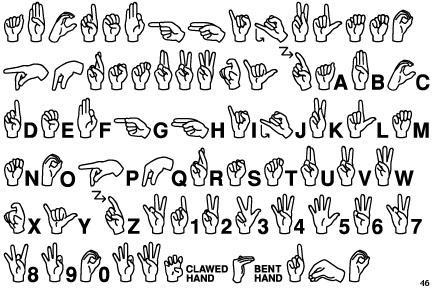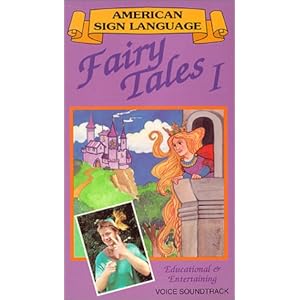 Cinderella is one of the so-called “rise tales”, which features a narrative arc of “rags to riches through magic and marriage” (Ruth Bottigheimer). For our class we have read a few stories that are related to this theme. They are comprised of an individual who is living in a bad situation and are troubled, later being introduced to magic and go through a social and economic transformation. Many times the main character ends up meeting and marrying a hero who is from a higher class and provides the character with a better standard of living. I do agree that in real life someone can go through a “rags to riches” transformation, although it is rare. These situations are not ones ignited by magic or happen instantly and spontaneously. In reality these stories are fueled by the desire to better oneself and through the use of hard work and perseverance. These situations also normally only include earning a substantial amount of money. It is possible and seen when an individual marries someone else who is rich, and in these situations they marry into money.
Cinderella is one of the so-called “rise tales”, which features a narrative arc of “rags to riches through magic and marriage” (Ruth Bottigheimer). For our class we have read a few stories that are related to this theme. They are comprised of an individual who is living in a bad situation and are troubled, later being introduced to magic and go through a social and economic transformation. Many times the main character ends up meeting and marrying a hero who is from a higher class and provides the character with a better standard of living. I do agree that in real life someone can go through a “rags to riches” transformation, although it is rare. These situations are not ones ignited by magic or happen instantly and spontaneously. In reality these stories are fueled by the desire to better oneself and through the use of hard work and perseverance. These situations also normally only include earning a substantial amount of money. It is possible and seen when an individual marries someone else who is rich, and in these situations they marry into money.Sunday, October 31, 2010
Rags to Riches
 Cinderella is one of the so-called “rise tales”, which features a narrative arc of “rags to riches through magic and marriage” (Ruth Bottigheimer). For our class we have read a few stories that are related to this theme. They are comprised of an individual who is living in a bad situation and are troubled, later being introduced to magic and go through a social and economic transformation. Many times the main character ends up meeting and marrying a hero who is from a higher class and provides the character with a better standard of living. I do agree that in real life someone can go through a “rags to riches” transformation, although it is rare. These situations are not ones ignited by magic or happen instantly and spontaneously. In reality these stories are fueled by the desire to better oneself and through the use of hard work and perseverance. These situations also normally only include earning a substantial amount of money. It is possible and seen when an individual marries someone else who is rich, and in these situations they marry into money.
Cinderella is one of the so-called “rise tales”, which features a narrative arc of “rags to riches through magic and marriage” (Ruth Bottigheimer). For our class we have read a few stories that are related to this theme. They are comprised of an individual who is living in a bad situation and are troubled, later being introduced to magic and go through a social and economic transformation. Many times the main character ends up meeting and marrying a hero who is from a higher class and provides the character with a better standard of living. I do agree that in real life someone can go through a “rags to riches” transformation, although it is rare. These situations are not ones ignited by magic or happen instantly and spontaneously. In reality these stories are fueled by the desire to better oneself and through the use of hard work and perseverance. These situations also normally only include earning a substantial amount of money. It is possible and seen when an individual marries someone else who is rich, and in these situations they marry into money.Sunday, October 24, 2010
ASL and Fairy Tales
The presentation of Dr. Rust and Rose was very moving and interesting. They focused on the use of ASL to tell stories. It is incredible how the deaf culture in America has developed their own form of communication and with that they are able to spread the folktales that are predominantly passed down through the oral tradition. When they presented the tales using ASL I was shocked at how well I was able to understand the story when I had no background in American sign language at all. What really stood out for me was the fact that through ASL the tales can be portrayed similar to watching a movie, in that at certain moments you can present the story in slow motion and with influence from cinematography. The speaker also mentioned that he was a child of deaf parents and when he would go out to watch a movie he would come home and recite the storyline of the movies in a storytelling setting. He would sign the movie for his family as they sat around and watched the film through his sign language. Additionally, the speakers brought to attention that in the deaf community a lot of the stories poke fun at the dominate population and make fun of “hearing” people. This presentation opened my eyes to truly grasp how fairy tales are not just stories that are dependent on oral or auditory forms of communication but can also be portrayed visually.
http://www.youtube.com/watch?v=VZjah32LoW0 - Coda Brothers


http://www.youtube.com/watch?v=VZjah32LoW0 - Coda Brothers


Friday, October 15, 2010
Your Shamanic Child
On October 7 our fairy tale class went to hear a lecture by Vivien Deitz. She is a clinical social worker who uses a variety of techniques including Jungian psychology and shamanistic healing. In her lecture she addressed the tales "Aladdin" and "the Velveteen Rabbit". Claiming that "Aladdin" is a story about the transformation from depression to enlightment, while "the velveteen rabbit" was about moving from anxiety to optimism. A reoccuring theme of the "shamanic child" was present in her lecture and is what really stood out for me. I thought this concept was rather interesting and a creative way of interpretation. I do not necessarily agree with what was said but I definatly found it to be intertaining none the less. When she told us to close our eyes and locate our inner shamanic child I just kept envisioning penguins, which was quite strange. I did however really like her theory that fairy tales were a gateway into lost innocence and that everyone has an inner child, or personal genie. In one of our reading in class it mentioned a similiar concept. That children relate best to fairy tales because their adolescence most closely relates to the motifs and images present in many of the tales. I do kind of agree that fairy tales can connect you to your "inner child" in that it can bring you to remember what it was like to be a child and to let your imagination take over. Overall I found Vivien Deitz lecture to be very entertaining and although a bit fruity, it was a fun approach to fairy tales.
Sunday, October 10, 2010
Rammstein and Snow White
The music video Sonne by Rammstein is a modern adaptation of the classic fairy tale Snow White. I think this music video is not related to any of the stories in that it does not follow the same storyline or structure at all. However, there were many motifs present. The miners represented the 7 dwarves, which is the same as the tales, because in the Brothers Grimm the Dwarves are miners that dug for minerals. In the video the dwarves were the servants of Snow White and she was evil as opposed to the tales where she is innocent. Some imagery that stood out to me was the presence of red apples, the glass coffin, the “evil” female figure, the mirror and the poison comb. Additionally it was interesting to see the symbol of gold in the video, gold was not present in the tales but in the music video Snow White has the dwarves mining for gold to fuel her addiction. She can be seen snorting gold and it even shows her injecting gold before she overdoses. Furthermore, in the tales there is the attendance of a prince but there is no prince in the video. I really enjoyed Rammstein’s video because it is a very interesting and unique modern adaptation.
Friday, October 1, 2010
Cupid and Psyche/Beauty and the Beast
The story “Cupid and Psyche” bears much resemblance to the tale of “Beauty and the Beast”. In both stories the youngest daughter of three is an extraordinarily beautiful young woman who possesses the attention of everyone around them and the older two sisters are jealous of their younger sibling. This image of three sisters, the youngest being the most beautiful is a very common theme in fairy tales and can be seen in a number of stories. In both “Cupid and Psyche” and Beauty and the Beast” the beautiful young girl lives in the luxurious homes of their counterpart but go for a long period of time without seeing them. One difference here in these tales is that in Beauty and the Beast, the young girl does not think she is in love with the Beast until the end of the story and constantly rejects his marriage proposal. While in Cupid and Psyche, Psyche is almost instantly enticed by Cupid through his loving words and kind manner.
In both tales, the older sisters bring many problems for the lovers. In Beauty and the Beast, the sisters are jealous of their sister’s happiness and pretend to be very loving of their younger sister and trick her into staying more than the ten days the Beast granted, in doing so the Beast attempts to kill himself through starvation. In Cupid and Psyche, her sisters motivate her to sneak in a lamp and a knife to the dinner table to reveal her husband and to kill him if he is a monster. By doing so Psyche almost loses her husband and betrays his trust. In both of these fairy tales in the end the two mean sisters face punishment. In Beauty and the Beast the sisters are turned into statues and in Cupid and Psyche the sisters fall off a cliff and die.
The overall message in these two fairy tales are ultimately the same. That people should love for more than appearance and to “not judge a book by its cover”, and that the value of personality is greater than that of appearance. These two tales although different in details, portrays similar messages and use the same central theme.


Subscribe to:
Posts (Atom)